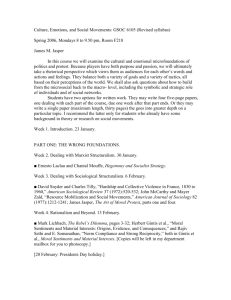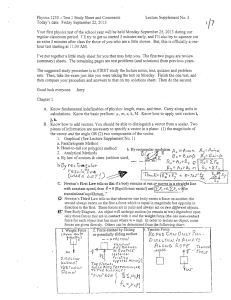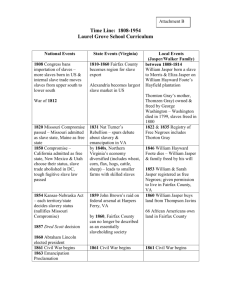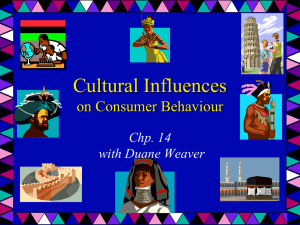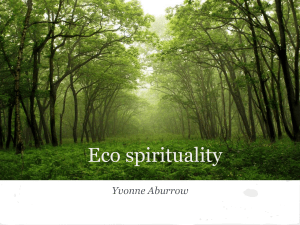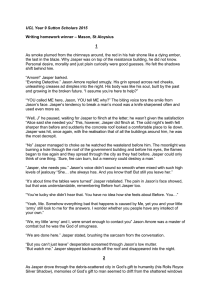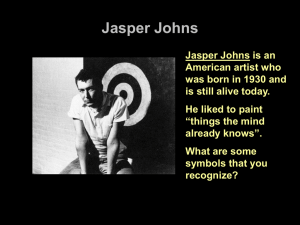David Jasper, The Sacred Community: Art, Sacrament, and the
advertisement
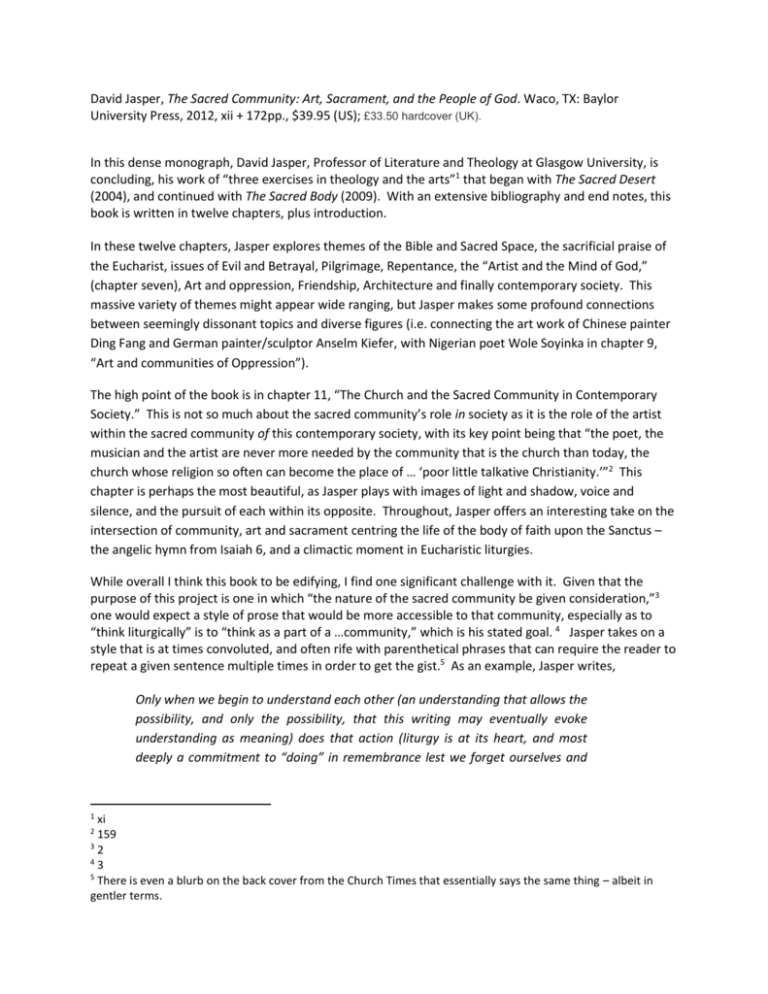
David Jasper, The Sacred Community: Art, Sacrament, and the People of God. Waco, TX: Baylor University Press, 2012, xii + 172pp., $39.95 (US); £33.50 hardcover (UK). In this dense monograph, David Jasper, Professor of Literature and Theology at Glasgow University, is concluding, his work of “three exercises in theology and the arts”1 that began with The Sacred Desert (2004), and continued with The Sacred Body (2009). With an extensive bibliography and end notes, this book is written in twelve chapters, plus introduction. In these twelve chapters, Jasper explores themes of the Bible and Sacred Space, the sacrificial praise of the Eucharist, issues of Evil and Betrayal, Pilgrimage, Repentance, the “Artist and the Mind of God,” (chapter seven), Art and oppression, Friendship, Architecture and finally contemporary society. This massive variety of themes might appear wide ranging, but Jasper makes some profound connections between seemingly dissonant topics and diverse figures (i.e. connecting the art work of Chinese painter Ding Fang and German painter/sculptor Anselm Kiefer, with Nigerian poet Wole Soyinka in chapter 9, “Art and communities of Oppression”). The high point of the book is in chapter 11, “The Church and the Sacred Community in Contemporary Society.” This is not so much about the sacred community’s role in society as it is the role of the artist within the sacred community of this contemporary society, with its key point being that “the poet, the musician and the artist are never more needed by the community that is the church than today, the church whose religion so often can become the place of … ‘poor little talkative Christianity.’”2 This chapter is perhaps the most beautiful, as Jasper plays with images of light and shadow, voice and silence, and the pursuit of each within its opposite. Throughout, Jasper offers an interesting take on the intersection of community, art and sacrament centring the life of the body of faith upon the Sanctus – the angelic hymn from Isaiah 6, and a climactic moment in Eucharistic liturgies. While overall I think this book to be edifying, I find one significant challenge with it. Given that the purpose of this project is one in which “the nature of the sacred community be given consideration,”3 one would expect a style of prose that would be more accessible to that community, especially as to “think liturgically” is to “think as a part of a …community,” which is his stated goal. 4 Jasper takes on a style that is at times convoluted, and often rife with parenthetical phrases that can require the reader to repeat a given sentence multiple times in order to get the gist.5 As an example, Jasper writes, Only when we begin to understand each other (an understanding that allows the possibility, and only the possibility, that this writing may eventually evoke understanding as meaning) does that action (liturgy is at its heart, and most deeply a commitment to “doing” in remembrance lest we forget ourselves and 1 xi 159 3 2 4 3 5 There is even a blurb on the back cover from the Church Times that essentially says the same thing – albeit in gentler terms. 2 each other) provoke my sense of being-here (in myself) into becoming a sense (more deeply felt and known) of being-toward.6 This parenthetic style is most evident in Chapter 1, where Jasper appears to be experimenting with a writing style that borders on stream-of-consciousness. The prose tightens up in later chapters, but the style still often stands as a barrier to understanding. The Sacred Community, will be a satisfying read for those who are not seeking a formally academic work, but seek a more contemplative and free flowing approach to the place of art and sacrament within the Christian community. The moments of insight and beauty outweigh the difficult prose, but nevertheless the reader must have patience in order to extract the full meaning of the text. Reviewer: Thomas C. Brauer 6 10, 11




